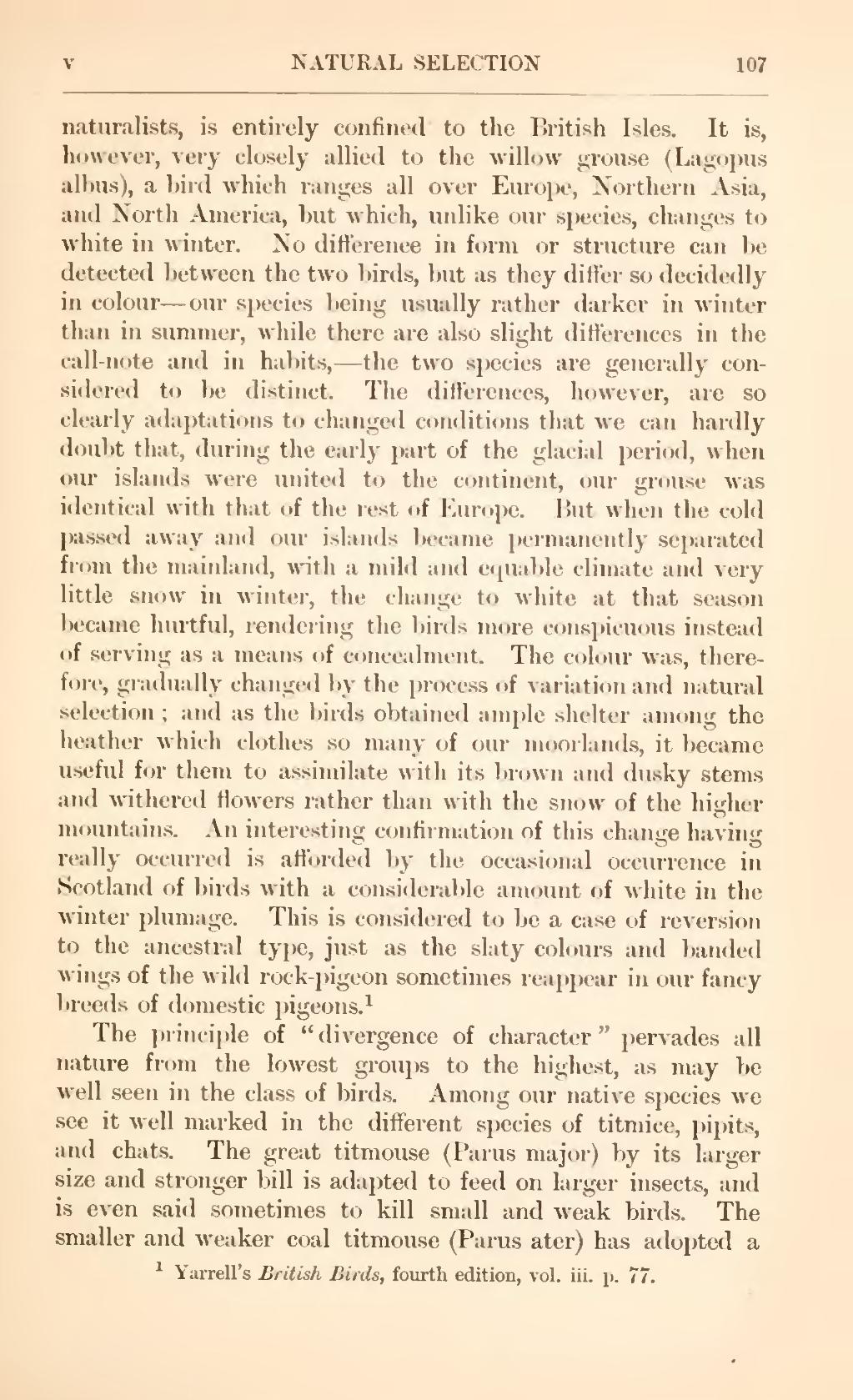naturalists, is entirely confined to the British Isles. It is, however, very closely allied to the willow grouse (Lagopus albus), a bird which ranges all over Europe, Northern Asia, and North America, but which, unlike our species, changes to white in winter. No difference in form or structure can be detected between the two birds, but as they differ so decidedly in colour—our species being usually rather darker in winter than in summer, while there are also slight differences in the call-note and in habits,—the two species are generally considered to be distinct. The differences, however, are so clearly adaptations to changed conditions that we can hardly doubt that, during the early part of the glacial period, when our islands were united to the continent, our grouse was identical with that of the rest of Europe. But when the cold passed away and our islands became permanently separated from the mainland, with a mild and equable climate and very little snow in winter, the change to white at that season became hurtful, rendering the birds more conspicuous instead of serving as a means of concealment. The colour was, therefore, gradually changed by the process of variation and natural selection; and as the birds obtained ample shelter among the heather which clothes so many of our moorlands, it became useful for them to assimilate with its brown and dusky stems and withered flowers rather than with the snow of the higher mountains. An interesting confirmation of this change having really occurred is afforded by the occasional occurrence in Scotland of birds with a considerable amount of white in the winter plumage. This is considered to be a case of reversion to the ancestral type, just as the slaty colours and banded wings of the wild rock-pigeon sometimes reappear in our fancy breeds of domestic pigeons.[1]
The principle of "divergence of character" pervades all nature from the lowest groups to the highest, as may be well seen in the class of birds. Among our native species we see it well marked in the different species of titmice, pipits, and chats. The great titmouse (Parus major) by its larger size and stronger bill is adapted to feed on larger insects, and is even said sometimes to kill small and weak birds. The smaller and weaker coal titmouse (Parus ater) has adopted a
- ↑ Yarrell's British Birds, fourth edition, vol. iii. p. 77.
